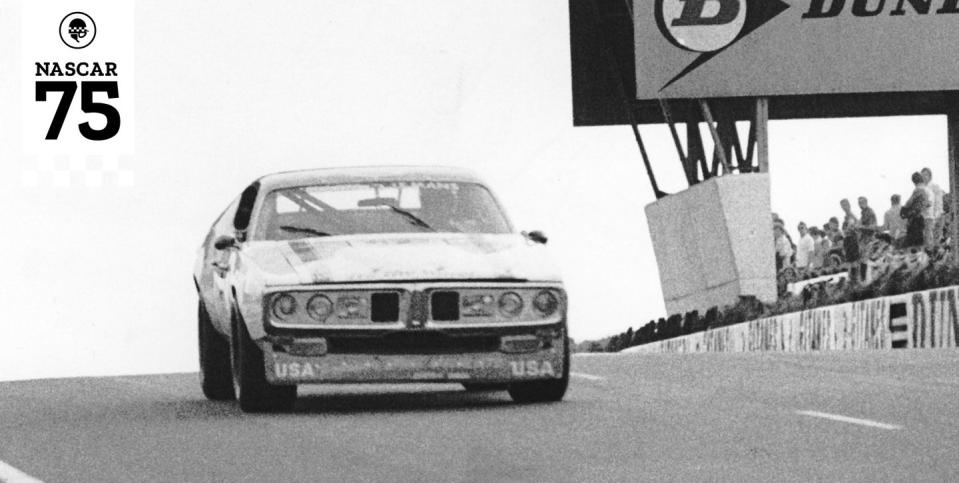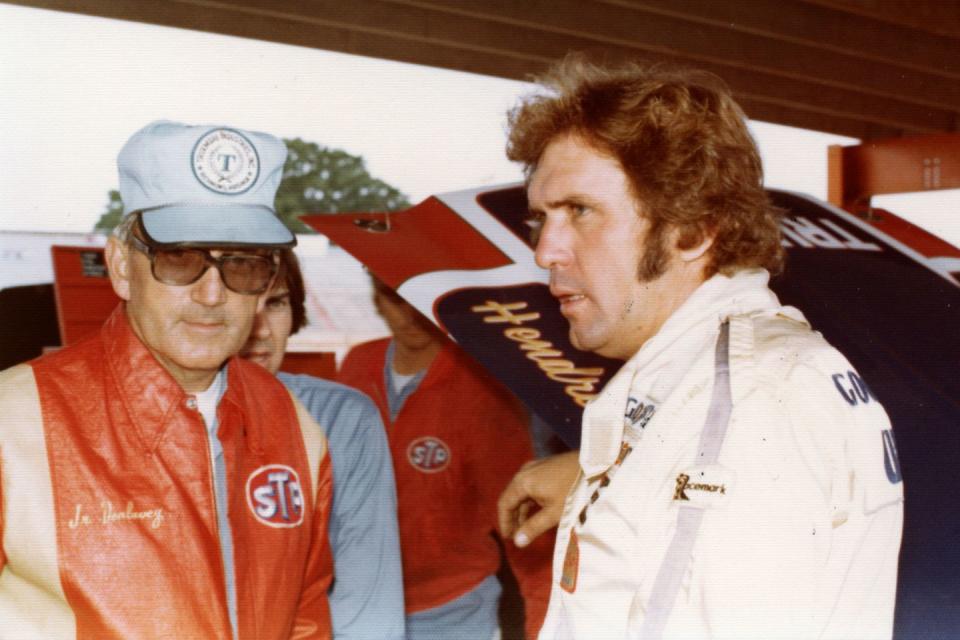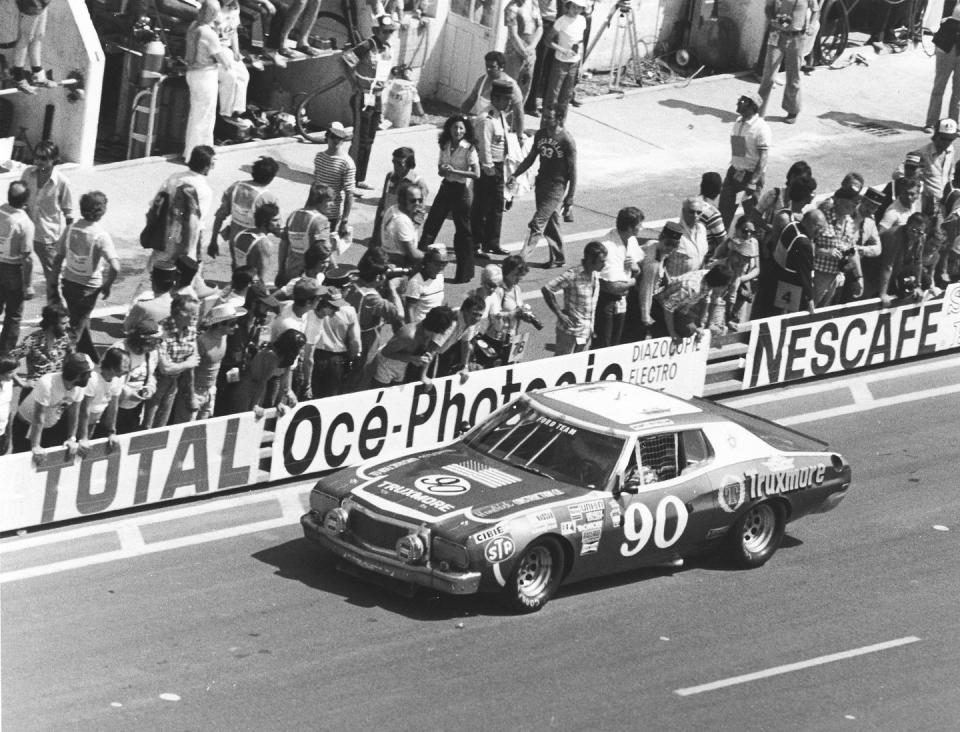How Hershel McGriff, Junie Donlavey Took NASCAR to 24 Hours of Le Mans

NASCAR's two entries at the 24 Hours of Le Mans in 1976 was an effort of NASCAR and the Automobile Club de l’Ouest to elevate both in the face of IndyCar and Formula 1.
An early example of the Garage 56 concept now formalized at Le Mans, it was a chance for the ACO to present something new and different to its fans.
NASCAR's best showing came from the Junie Donlavey Ford, which lasted a little more than 100 laps in a race where the winning Porsche 936 of Jackie Ickx and Gijs van Lennep covered 350.
When the Ford of Junie Donlavey and the Dodge Charger of Hershel McGriff were invited to race at Le Mans in 1976, it was more than just a Bicentennial hoorah with the French allies who helped the colonist win the Revolutionary War.
The on-and-off chumminess between NASCAR’s France family and the Automobile Club de l’Ouest, organizers at Le Mans, was in full bloom in the mid-1970s for political reasons having to do with racing. Each conducted a major 24-hour race. Both were trying to elevate themselves when it came to open-wheel racing rivals—Indy car and Formula 1, respectively. As a result of conversations between “Big Bill” France, Bill Jr. and ACO officials during the 24-hour at Daytona, two NASCAR entries were issued an invitation to race at Le Mans.

An early example of the Garage 56 concept now formalized at Le Mans, it was a chance for the ACO to present something new and different to its multitude of enthusiastic fans. Spectacle has always been part of the Le Mans race and the NASCAR stockers would be nothing if not spectacular among the sports cars, because of their size and big American V-8s. On the other hand, they would race in their own class and were not a threat to decimate the field like the 7.0-liter Ford Mk. II and Mk. IV that had made history in their battles with Ferrari a decade earlier.
Donlavey, the perennial Grand National entrant, and ageless McGriff, the best road racer in NASCAR with a string of victories at Riverside in the Winston West series and long a friend of “Big Bill,” were natural choices for an expense-paid trip to Le Mans.
When trucked across France on flatbeds and once at the circuit, the American iron generated a lot of attention, as anticipated. The Charger was the latest example of an American muscle car. The 115-inch wheelbase Ford Torino, in French parlance was a “bolide” and suggested the earliest days of the race through the French countryside due to its sheer size.

“Talk about feeling special!” the late Donlavey told Autoweek writer Al Pearce. “There we were, a bunch of guys from Richmond, Virginia, running a Ford stock car against those Porsches and Ferraris and prototypes. Let me tell you… that was the last place I ever expected to race.”
It was not the first international race for McGriff, who had won the Mexican Road Race, but he, too, was glad to be racing in front of 200,000 French fans waving and pointing at the American “bolides” as they roared by.
Unfortunately, McGriff’s Charger, scheduled to be co-driven with son Doug, had a high compression engine not suited for the low octane fuel provided by the organizers for the race. It blew up just two laps into the 24-hour. The Donlavey Ford lasted a little over 100 laps in a race where the winning Porsche 936 of Jackie Ickx and Gijs van Lennep covered 350. The transmission gave way with NASCAR regular Dick Brooks behind the wheel, unfortunate given the Le Mans and road racing experience of co-drivers Dick Hutcherson and Frenchman Francois Mignot.
But the seed of cooperation had been planted between the Frances and the French race organizers. NASCAR President Bill Jr. would soon become instrumental in organizing a World Challenge for Endurance Drivers that ran from 1978 to 1980 that included Le Mans, Nurburgring, Spa, Silverstone and Daytona as well as the sports car races at the Frances’ Talladega track, among other IMSA events. (John Paul Sr. was the champion in 1978 and 1980; Don Whittington won it in 1979.)
The cooperation is in full bloom once again with the current historic agreement on rules for hybrid prototypes between NASCAR-owned IMSA, Le Mans and the World Endurance Championship and the invitation of a Hendrick Motorsports Cup Series Camaro to race out of Garage 56 at the 2023 24 Hours of Le Mans in June.

 Yahoo Autos
Yahoo Autos 